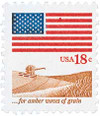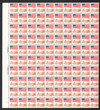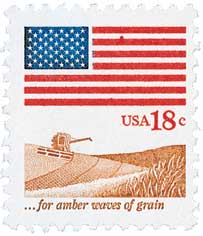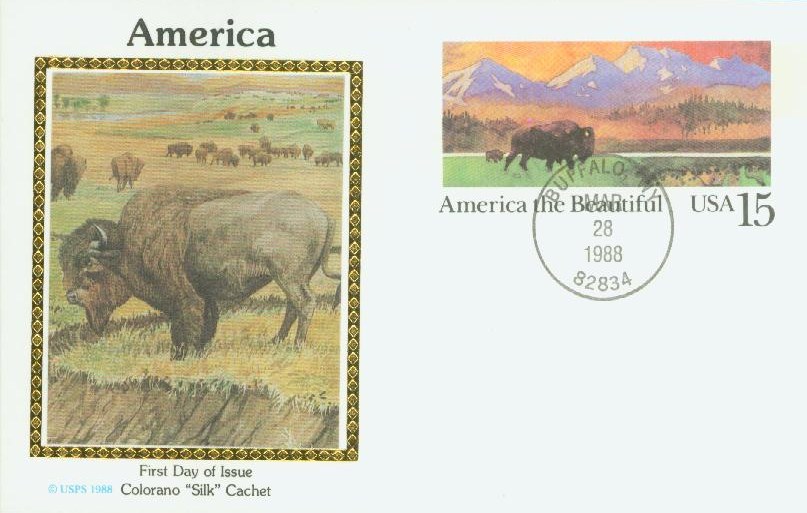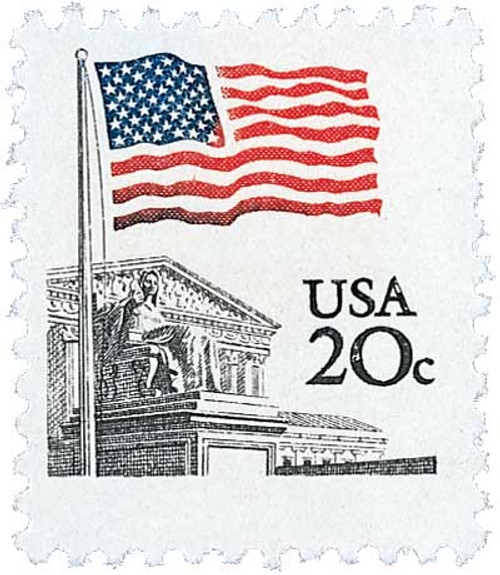
# 1890 - 1981 18c Flag Over Field
1981 18¢ Flag Over Field
City: Portland, ME
America The Beautiful
In 1893, 33-year-old college professor Katharine Lee Bates traveled to Colorado to teach a short summer English course. Along the way, she stopped at the World’s Columbian Exposition in Chicago, where the alabaster “White City” moved her. And as she rode the train through America’s heartland she was awestruck by the expansive wheat fields.
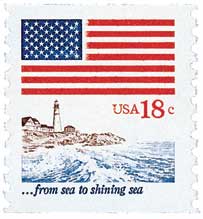
As Bates later recalled, “One day some of the other teachers and I decided to go on a trip to 14,000-foot Pikes Peak. We hired a prairie wagon. Near the top we had to leave the wagon and go the rest of the way on mules. I was very tired. But when I saw the view, I felt great joy. All the wonder of America seemed displayed there, with the sea-like expanse.”
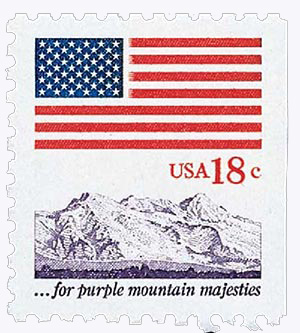
When Bates approached Colorado Springs, she noticed how the granite of Pikes Peak gave the mountains a purple hue. As she stood on the summit of the mountain, a poem came to mind. She returned to her room at the Antlers Hotel and immediately wrote it down. She initially titled the poem, “Pikes Peak.”
Two years later, the poem appeared in the church periodical, The Congregationalist, for the Fourth of July. As the poem gained popularity, it was set to different pieces of music. Perhaps the most popular was Samuel A. Ward’s Materna. The poem and song were first combined in 1910 and titled, America the Beautiful.
| Remember – you can find more conditions and First Day Covers by clicking on any of the images on this page. |
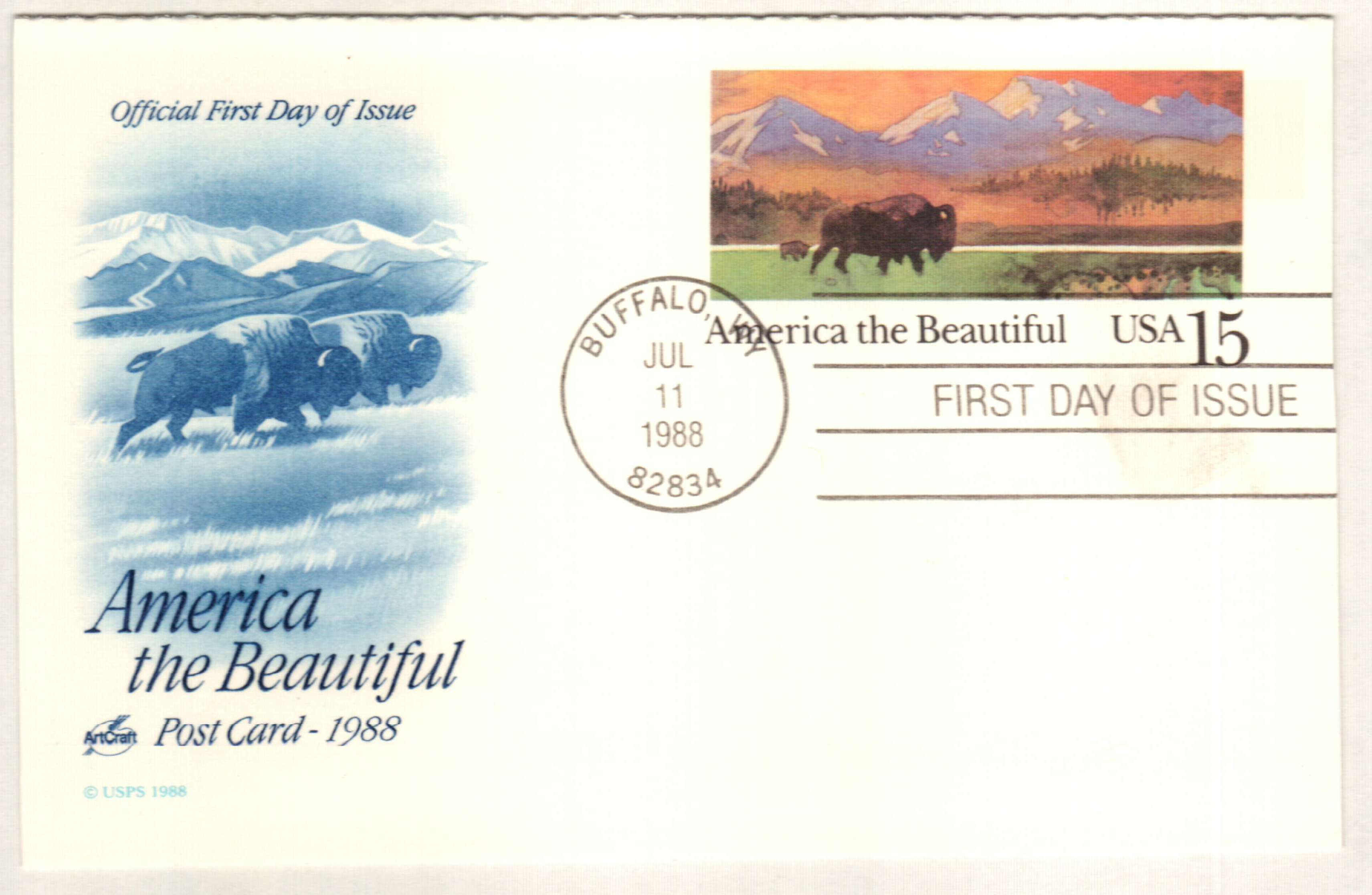
Click here for the complete set of 1981 flag stamps.
1981 18¢ Flag Over Field
City: Portland, ME
America The Beautiful
In 1893, 33-year-old college professor Katharine Lee Bates traveled to Colorado to teach a short summer English course. Along the way, she stopped at the World’s Columbian Exposition in Chicago, where the alabaster “White City” moved her. And as she rode the train through America’s heartland she was awestruck by the expansive wheat fields.

As Bates later recalled, “One day some of the other teachers and I decided to go on a trip to 14,000-foot Pikes Peak. We hired a prairie wagon. Near the top we had to leave the wagon and go the rest of the way on mules. I was very tired. But when I saw the view, I felt great joy. All the wonder of America seemed displayed there, with the sea-like expanse.”

When Bates approached Colorado Springs, she noticed how the granite of Pikes Peak gave the mountains a purple hue. As she stood on the summit of the mountain, a poem came to mind. She returned to her room at the Antlers Hotel and immediately wrote it down. She initially titled the poem, “Pikes Peak.”
Two years later, the poem appeared in the church periodical, The Congregationalist, for the Fourth of July. As the poem gained popularity, it was set to different pieces of music. Perhaps the most popular was Samuel A. Ward’s Materna. The poem and song were first combined in 1910 and titled, America the Beautiful.
| Remember – you can find more conditions and First Day Covers by clicking on any of the images on this page. |

Click here for the complete set of 1981 flag stamps.







